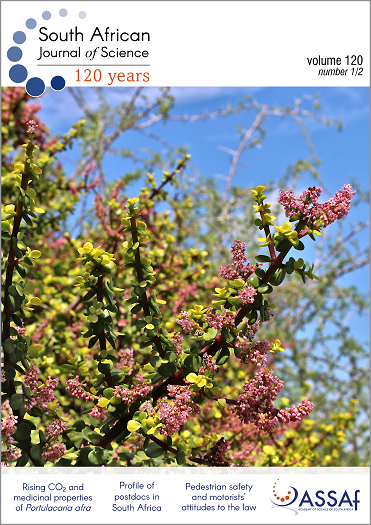Burden of postpartum depression in sub-Saharan Africa: An updated systematic review
DOI:
https://doi.org/10.17159/sajs.2024/14197Keywords:
depression, postpartum, postnatal, perinatal, sub-Saharan AfricaAbstract
Postpartum depression (PPD) is a significant public health concern in resource-constrained sub-Saharan Africa (SSA). Efforts to combat this burden are hampered by the region’s wide variation in reported prevalence. This review aimed to systematically synthesize up-to-date data on PPD in SSA. The review was structured per the Preferred Reporting Item for Systematic Reviews and Meta-analyses. Included in the review were studies that reported the prevalence of PPD in SSA. A search was undertaken of PubMed, Medline, CINAHL, Academic Search Complete, and PsycINFO. A random-effect model was fitted to estimate the pooled burden of postpartum depressive symptoms in SSA. We conducted subgroup analyses to estimate the distribution of postpartum depressive symptoms based on important study characteristics: sample size, the timing of diagnosis, design, study setting/region, instrument, and income/ economy. The prevalence of postpartum depressive symptoms ranged from 3.8% to 69.9%, with a pooled estimate of 22.1% (CI 18.5–26.2; I2 = 98.2; Tau = 0.848; p<0.001). There was a significant variation in postpartum depressive symptoms with sample size (p<0.001). The highest prevalence (25.6% CI 21.5–30.1) was obtained within 12 weeks postpartum. The prevalence estimate was highest (23.3%; CI 20.1–26.8) with the Edinburgh Postnatal Depression Scale (EPDS). South Africa (30.6%; CI 23.6–38.7) and Zimbabwe (29.3%; CI 22.2–37.5) reported the highest prevalence rates, while Tanzania (13.5%; CI 10.1–17.9) reported the lowest prevalence estimates. Upper-middle SSA countries presented the highest prevalence rates (30.6%; CI 23.6–38.7). The prevalence was highest within the period 2010–2015. PPD constitutes a significant health burden in SSA and is fast becoming an epidemic in southern Africa.
Significance:
- Given that PPD is a recurring mental health challenge among women in sub-Saharan Africa, there is an urgent need for strategic policy provisions to ameliorate its burden.
- An increase in prevalence of PPD from 2005–2010 to 2015–2021 is indicative of the need for national governments to intensify efforts targeted at achieving the UN Sustainable Development Goals 3 and 5 in the region.
- In SSA, the prevalence of PPD is highest (approximately 30%) in Southern Africa, precisely South Africa and Zimbabwe, where it is fast becoming an epidemic; hence strategies are needed to curtail its growing trend.
- There is a need to characterise and stratify the risk factors of PPD in sub-Saharan to guide policy development of predictive algorithms and implementation strategies.
Published
Issue
Section
License

All articles are published under a Creative Commons Attribution 4.0 International Licence
Copyright is retained by the authors. Readers are welcome to reproduce, share and adapt the content without permission provided the source is attributed.
Disclaimer: The publisher and editors accept no responsibility for statements made by the authors
How to Cite
- Abstract 1492
- PDF 1952
- EPUB 363
- XML 345













.png)